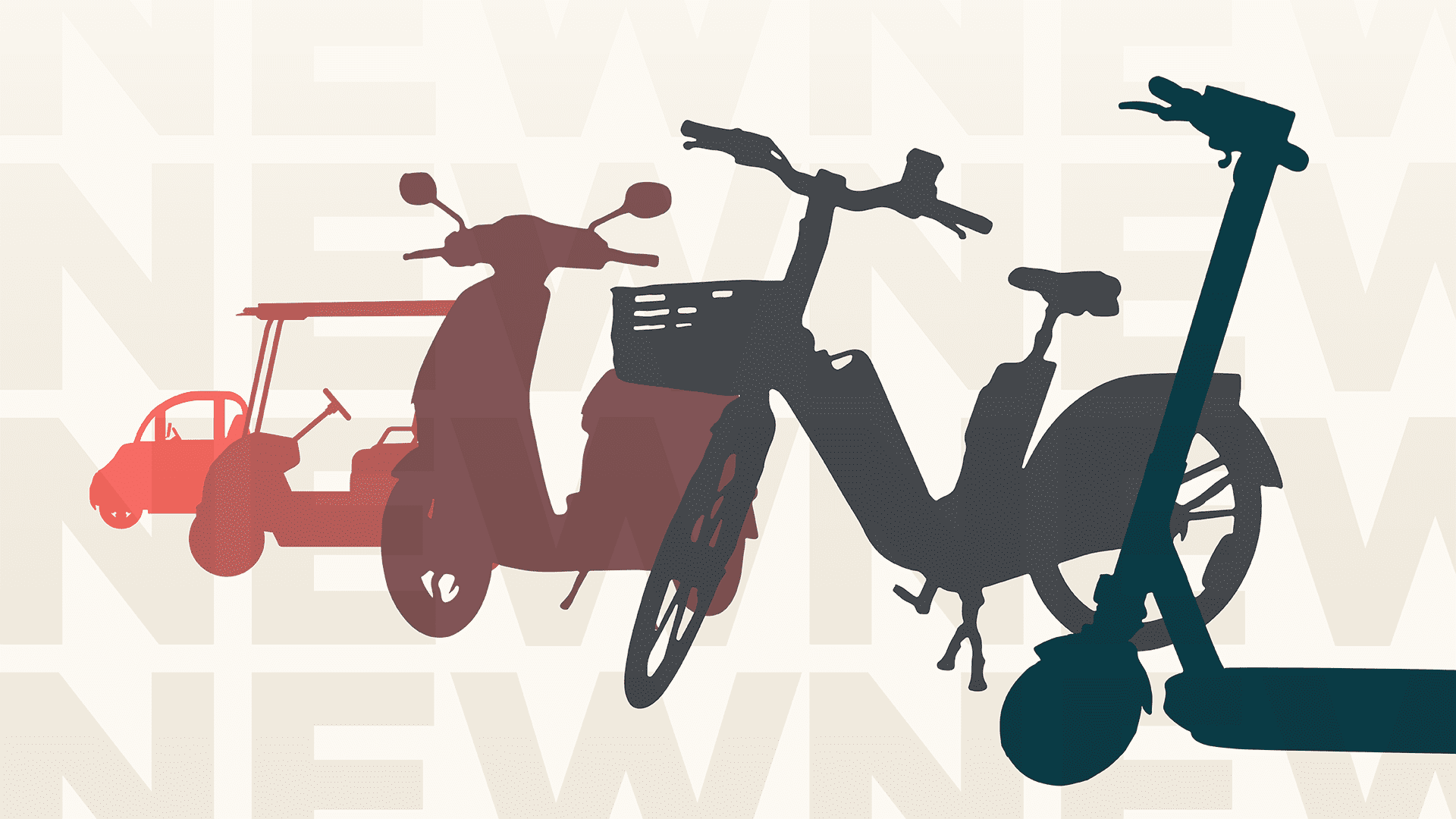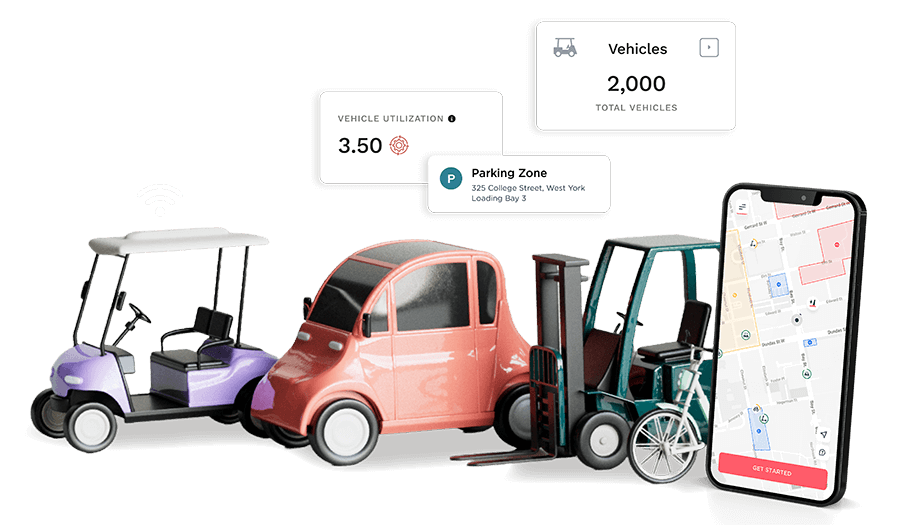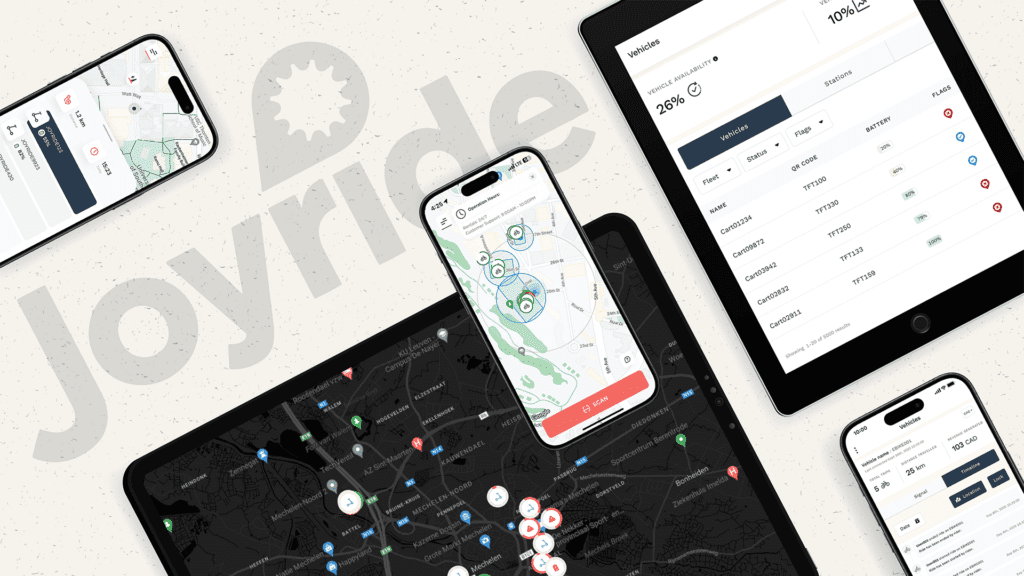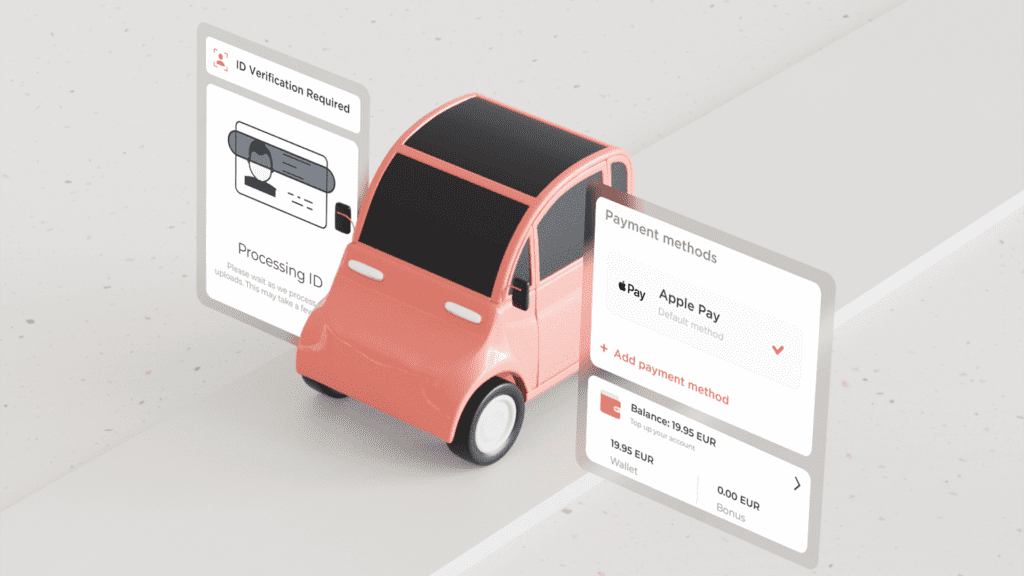What is New Mobility?
Also known as ‘next-generation mobility,’ New Mobility encompasses a wide range of emerging transportation modes, models, trends and technologies (and those yet to be developed!)
Whether you’re a transit enthusiast, shared fleet operator or mobility expert charting the biggest game-changing technologies, this glossary provides a solid foundation of the terms and concepts that matter as we ride into a new year of new opportunities in mobility.
New Mobility Vehicles
1. Zero-Emission Vehicles (ZEVs)
Vehicles powered by clean energy sources, such as lithium-ion batteries or hydrogen fuel cells. Can also refer to human powered modes such as a mechanical bicycle.
2. Low-Speed Electric Vehicles (LSVs)
Encompasses a wide range of electric vehicles designed for use at lower speeds. Typically restricted to certain roadways and have a maximum speed of 25 to 35 mph. Similarly, Neighborhood Electric Vehicles (NEVs) are small electric quadricycles designed for low-speed, localized travel within neighborhoods and communities. (Get a glimpse of how Joyride is powering connected, keyless and trackable LSVs here.)
3. Autonomous Vehicles (AVs)
Self-driving vehicles that use various sensors and AI technologies to navigate without human intervention. Similarly, Unmanned Aerial Vehicles (UAVs) are aircraft operated without a human pilot on board. They can be remotely controlled or operate autonomously.
4. Electric Vertical Takeoff and Landing (eVTOL)
Aircraft capable of taking off, hovering, and landing vertically. The ability to operate in confined spaces makes them ideal for urban applications, including surveillance and cargo transport using drones.
5. E-Cargo Bike
A novel class of urban logistics vehicles, available in both three and four-wheel designs. Specifically configured with custom frames or compartments for transporting goods, many of these vehicles look nothing like a bike, but are classified as such due to their power source (manual pedal with electric assist), low speeds and ability to fit in a bike lane.
New Mobility Models
6. Soft Mobility
Refers to the movement of people or goods using non-motorized methods such as walking, or vehicles powered by human effort such as rollerblades, skateboards and mechanical bicycles. Also known as active mobility, or active travel.
7. Mobility as a Service (MaaS)
A transportation model that incorporates various modes and service providers to provide seamless point-to-point travel. MaaS apps aim to simplify the user experience by integrating all mobility options into a single booking and payment platform.
8. Mobility as a Benefit (MaaB)
Transportation-related perks and incentives offered by employers to improve work-life balance, reduce commuting stress, attract/retain talent, and contribute to company goals for Environmental, Social and Corporate Governance (ESG).
9. Multimodal
Multi-modal transportation involves using two or more modes of travel, like walking, cycling, ride-hailing, or public transit, in a single journey to increase convenience and efficiency. (See how shared mobility companies like Canada’s SCOOTY are embracing multi-modal travel here.)
10. Last-Mile
Transportation options that connect people from their point of arrival, such as a bus or train station, to their final destination. A common use case for micromobility vehicles.
A subcategory of Last-Mile Transportation is Last-Mile Delivery, which refers to the transportation of products and food from a central hub to their ultimate destination.
11. Cyclo-Logistics / Cycle-Logistics
The use of cargo bikes, box bikes, long-tail bikes, trikes, pushcarts or other specialized bicycles to carry goods, parcels, or even passengers in urban environments. Insulated chambers enable these vehicles to be used for cold-chain logistics.
12. Demand Responsive Transportation (DRT):
Flexible, on-demand transportation options that adapt to users’ needs and schedules. This model is useful for paratransit programs, or in low-density areas where regular service is not financially feasible.
13. Charging as a Service (CaaS)
A model where individuals or businesses access charging infrastructure for electric vehicles, such as electric cars or e-bikes, on a pay-per-use or subscription basis.
14. Batteries as a Service (BaaS)
A model that replaces traditional battery ownership with a subscription-based system, enabling users to exchange depleted batteries for fully charged ones at designated swapping stations.
15. Fleets as a Service (FaaS)
A comprehensive solution offering end-to-end management for vehicle fleets including procurement, maintenance, and logistics. This model extends beyond traditional vehicles to encompass micromobility options like e-scooters and bikes, providing a holistic approach to managing the transportation of goods and people.
New Mobility Technology
16. Telematics
A broad field that integrates telecommunications, vehicle technology, road safety, and more. It involves using telecom devices to send, receive, and store information for remote control of objects.
17. IoT Integration
The seamless incorporation of Internet of Things (IoT) devices and sensors into electric vehicles and urban infrastructure for data collection and analysis. Through the use of IoT, vehicles come to life and become connected, trackable and shared.
18. Vehicle to Everything (V2X)
Technology that enables a vehicle to exchange real-time information with its surroundings. This includes (but is not limited to) other vehicles, drivers, cyclists, pedestrians, road signs, traffic lights and other transportation infrastructure.
19. Over-the-Air (OTA) Update
Refers to the process of remotely and wirelessly updating firmware (the software on-board smart vehicles), to enhance performance, safety features, and functionality without the need for physical intervention.

Start the new year with knowledge
Interested in launching a fleet of shared vehicles this year? With the Ultimate Scooter Sharing Business Guide you can master new mobility business fundamentals in less than three hours!
Enroll now to start your new mobility adventure today.
New Mobility Infrastructure
20. Smart City
An urban area that employs advanced technologies and data to enhance infrastructure, transportation and overall quality of life.
21. Zero Emission Delivery Zone (ZEDZ)
A designated area where only environmentally friendly, zero-emission vehicles are allowed for package or goods delivery, with the goal of reducing noise pollution and greenhouse gas emissions.
22. Mobility Hub
A centralized location or facility where various transportation options converge. Designed to enhance multi-modal connectivity and may host other amenities such as charging stations.
23. Battery Swapping Station
A facility where the depleted batteries of electric vehicles can be exchanged for fully charged batteries. This process provides a fast and efficient method for extending the range of electric vehicles.
24. Low Traffic Neighbourhood (LTNs)
An urban or suburban area where traffic management measures, such as road closures, traffic calming, and restrictions, are implemented to significantly reduce the flow of motorized vehicles, making the area more pedestrian and cyclist-friendly.
New Year, New Mobility
As you can see, the list of mobility terminology is constantly evolving, as is the industry itself. For more information on how to manage your own shared mobility fleet, or how to modernize your business with connected vehicles, contact us today for a personalized demo.







